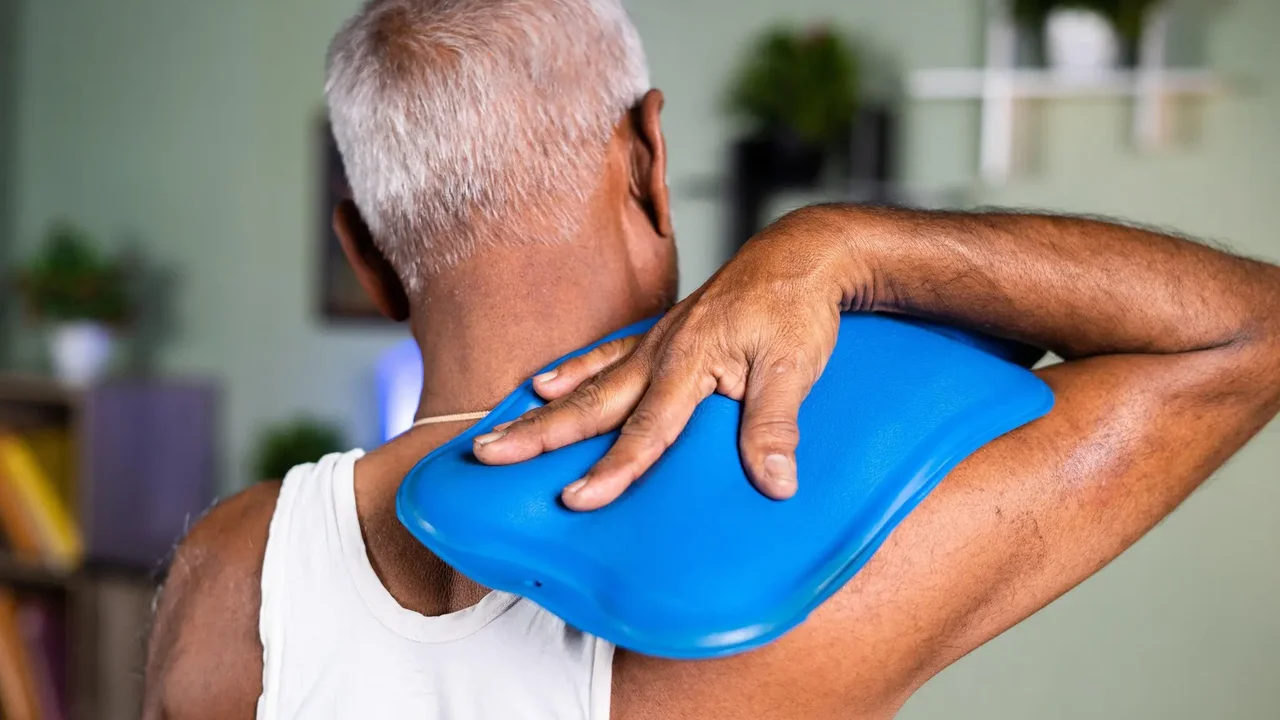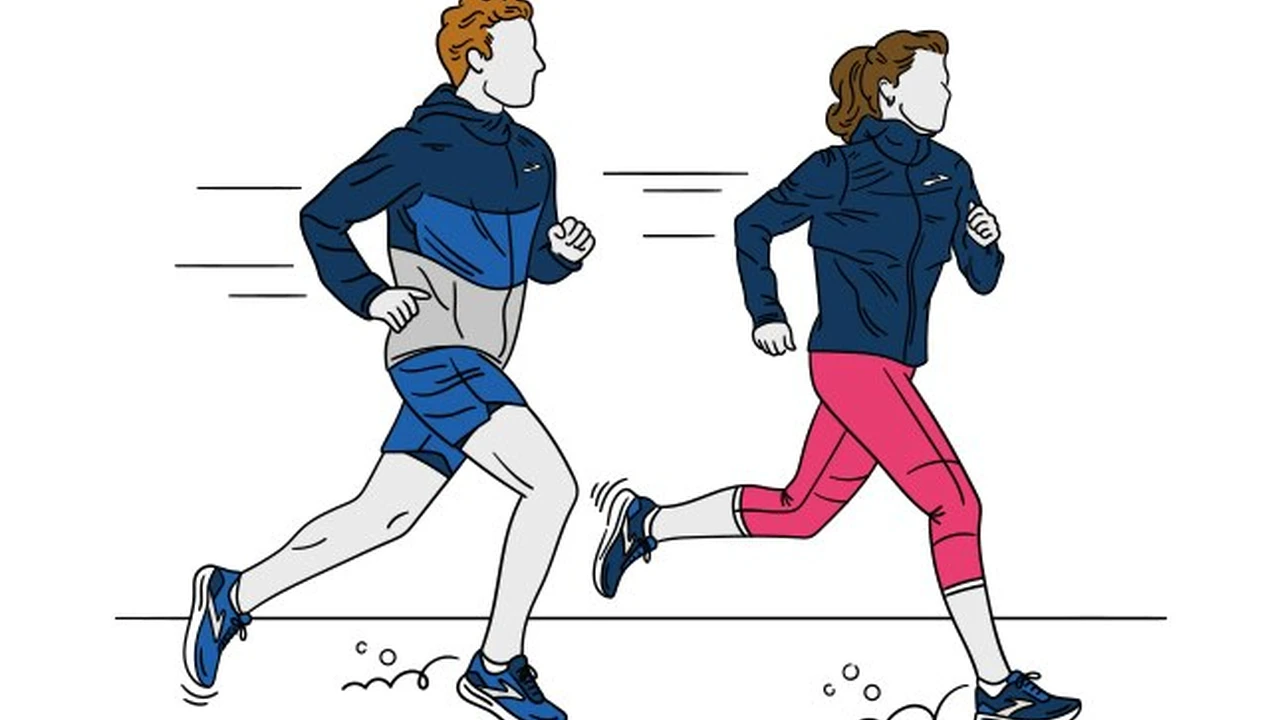Using Ice and Heat for Jogging Injuries

Understanding Common Injuries and Pain Management Techniques
Dealing with injuries and pain is an unfortunate reality for many, whether they're athletes, weekend warriors, or simply navigating daily life. Understanding the common types of injuries, their causes, and effective pain management techniques is crucial for a swift and comfortable recovery. This article delves into various aspects of injury management, exploring everything from initial first aid to long-term pain relief strategies.
The Importance of Early Intervention for Injury Recovery
The sooner you address an injury, the better your chances of a full and speedy recovery. Ignoring pain or trying to "tough it out" can often lead to more serious complications and prolonged discomfort. Early intervention allows you to minimize inflammation, prevent further damage, and initiate the healing process effectively. This often involves rest, ice, compression, and elevation (RICE), but also consulting with a healthcare professional for proper diagnosis and treatment.
Over-the-Counter Pain Relief Medications for Injury Management
Over-the-counter (OTC) pain relievers can be a valuable tool for managing pain associated with minor injuries. Nonsteroidal anti-inflammatory drugs (NSAIDs) like ibuprofen and naproxen can help reduce inflammation and pain. Acetaminophen, while not an anti-inflammatory, can effectively alleviate pain. However, it's important to use these medications responsibly and according to the recommended dosage. Always consult with a doctor or pharmacist if you have any underlying health conditions or are taking other medications.
Topical Pain Relief Creams and Gels for Targeted Pain Relief
Topical pain relief creams and gels offer a targeted approach to pain management. These products often contain ingredients like menthol, capsaicin, or lidocaine, which work by numbing the area or blocking pain signals. They can be particularly effective for localized pain, such as muscle strains or joint pain. Popular brands include Biofreeze, Bengay, and Aspercreme. The choice depends on personal preference and the specific type of pain being experienced.
Comparing Biofreeze vs Bengay for Muscle Pain Relief
Biofreeze and Bengay are two popular topical pain relief products, but they work in different ways. Biofreeze uses menthol to create a cooling sensation, which helps to numb the area and reduce pain. Bengay, on the other hand, contains methyl salicylate and menthol, which create a warming sensation that can help to relax muscles and improve blood flow. Biofreeze is often preferred for acute injuries, while Bengay may be more effective for chronic muscle pain. Pricing for Biofreeze typically ranges from $10-$20, while Bengay is generally less expensive, around $5-$15. Ultimately, the best choice depends on individual preferences and the specific type of pain.
The Role of Physical Therapy in Injury Rehabilitation
Physical therapy plays a crucial role in rehabilitating injuries and restoring function. A physical therapist can assess your injury, develop a personalized treatment plan, and guide you through exercises to strengthen muscles, improve range of motion, and reduce pain. Physical therapy can be particularly beneficial for injuries such as sprains, strains, and fractures. It's important to find a qualified physical therapist who has experience treating your specific type of injury. The cost of physical therapy can vary depending on your insurance coverage and the frequency of your sessions.
Understanding the Benefits of Massage Therapy for Pain Reduction
Massage therapy can provide significant pain relief by reducing muscle tension, improving circulation, and releasing endorphins, which are natural pain relievers. Different types of massage, such as deep tissue massage and Swedish massage, can be used to address various types of pain. Massage therapy can be particularly helpful for chronic pain conditions like back pain and fibromyalgia. While the cost of massage therapy can vary depending on the location and the therapist, it's often a worthwhile investment in your overall well-being.
Ergonomic Solutions for Preventing Injuries and Pain in the Workplace
Many injuries and pain conditions are related to poor ergonomics in the workplace. Ergonomics involves designing workspaces and tasks to fit the human body, reducing the risk of strain and injury. This can include adjusting your chair height, positioning your computer monitor correctly, and using ergonomic keyboards and mice. Investing in ergonomic solutions can significantly reduce your risk of developing musculoskeletal disorders and improve your overall comfort and productivity. Examples include standing desks, ergonomic chairs (Herman Miller Aeron Chair - $1300-$1800, Steelcase Gesture - $1000-$1500), and keyboard trays (prices vary widely). The initial investment can save you money in the long run by preventing costly injuries and lost work time.
The Best Ergonomic Chair for Back Pain Relief A Detailed Comparison
Choosing the right ergonomic chair is crucial for preventing and alleviating back pain. Several models stand out in terms of comfort, support, and adjustability. The Herman Miller Aeron Chair is a classic choice, known for its breathable mesh back and customizable support. The Steelcase Gesture is another excellent option, offering a wide range of adjustments and a comfortable seat. The Haworth Zody is a more budget-friendly option that still provides good support and adjustability. When choosing an ergonomic chair, consider factors such as lumbar support, seat height adjustment, armrest adjustability, and the overall comfort of the chair. Investing in a high-quality ergonomic chair can significantly improve your posture and reduce back pain.
Using Proper Lifting Techniques to Avoid Back Injuries
Back injuries are often caused by improper lifting techniques. When lifting heavy objects, it's important to bend your knees, keep your back straight, and lift with your legs. Avoid twisting your body while lifting, and keep the object close to your body. If the object is too heavy, ask for help or use lifting equipment. Practicing proper lifting techniques can significantly reduce your risk of back injuries and pain. Consider using a back brace (prices range from $20-$100) for added support when lifting heavy objects regularly.
The Benefits of Stretching and Flexibility Exercises for Injury Prevention
Stretching and flexibility exercises can help prevent injuries by improving range of motion, reducing muscle tension, and increasing blood flow. Incorporate stretching into your daily routine, focusing on major muscle groups such as your legs, back, and shoulders. Static stretching, where you hold a stretch for a period of time, is best performed after exercise. Dynamic stretching, where you move through a range of motion, is best performed before exercise. Regular stretching can improve your overall flexibility and reduce your risk of injuries.
Yoga and Pilates for Strengthening Core Muscles and Reducing Pain
Yoga and Pilates are excellent exercises for strengthening core muscles, improving posture, and reducing pain. These exercises focus on controlled movements and breathing techniques, which can help to improve body awareness and reduce muscle tension. Yoga can also help to reduce stress, which can contribute to pain. Pilates focuses on strengthening the core muscles, which can help to support the spine and reduce back pain. Joining a yoga or Pilates class can provide guidance and motivation, or you can practice at home using online resources.
The Importance of Hydration for Muscle Recovery and Pain Management
Hydration is essential for muscle recovery and pain management. Dehydration can lead to muscle cramps, fatigue, and increased pain. Drink plenty of water throughout the day, especially after exercise. Electrolyte drinks can also be helpful for replenishing fluids and electrolytes lost through sweat. Aim to drink at least eight glasses of water per day, and more if you are active or live in a hot climate. Consider using a hydration tracker app (free options available) to ensure you are meeting your daily fluid intake goals. Dehydration can exacerbate pain, so staying hydrated is crucial for a comfortable recovery.
Nutritional Strategies for Reducing Inflammation and Promoting Healing
Nutrition plays a vital role in reducing inflammation and promoting healing after an injury. Focus on eating a diet rich in anti-inflammatory foods, such as fruits, vegetables, and omega-3 fatty acids. Avoid processed foods, sugary drinks, and unhealthy fats, which can contribute to inflammation. Protein is also essential for muscle repair and recovery. Aim to eat a balanced diet that provides all the nutrients your body needs to heal. Consider adding supplements like turmeric (Curcumin supplements - $15-$30) and fish oil (Omega-3 supplements - $10-$25) to your diet to further reduce inflammation. Consulting with a registered dietitian can help you develop a personalized nutrition plan to support your recovery.
Sleep Hygiene Techniques for Promoting Restful Sleep and Pain Relief
Getting enough restful sleep is crucial for pain relief and recovery. Sleep deprivation can exacerbate pain and slow down the healing process. Practice good sleep hygiene techniques, such as establishing a regular sleep schedule, creating a relaxing bedtime routine, and avoiding caffeine and alcohol before bed. Make sure your bedroom is dark, quiet, and cool. Consider using a white noise machine or earplugs to block out distractions. If you have trouble sleeping, talk to your doctor about potential sleep disorders. A comfortable mattress (prices vary widely) and pillows (prices range from $20-$100) are also essential for restful sleep. Prioritizing sleep can significantly improve your pain management and overall well-being.
Mindfulness and Meditation Techniques for Chronic Pain Management
Mindfulness and meditation techniques can be effective tools for managing chronic pain. These techniques involve focusing on the present moment and accepting your thoughts and feelings without judgment. Mindfulness can help you to reduce stress, improve your mood, and cope with pain more effectively. Meditation can help you to relax your body and mind, which can reduce muscle tension and pain. There are many free mindfulness and meditation apps available, such as Headspace and Calm. Practicing these techniques regularly can help you to develop a greater sense of control over your pain.
The Role of Support Groups in Coping with Chronic Pain
Living with chronic pain can be isolating and challenging. Joining a support group can provide a sense of community and understanding. Support groups offer a safe space to share your experiences, learn coping strategies, and receive emotional support from others who understand what you're going through. There are many online and in-person support groups available for people with chronic pain. Talking to others who have similar experiences can help you to feel less alone and more empowered to manage your pain.
Alternative Therapies for Pain Management Acupuncture and Chiropractic Care
Alternative therapies, such as acupuncture and chiropractic care, can be helpful for managing pain. Acupuncture involves inserting thin needles into specific points on the body to stimulate the nervous system and release endorphins. Chiropractic care focuses on adjusting the spine to improve alignment and reduce pain. These therapies may not be effective for everyone, but they can be worth exploring if you are looking for alternative ways to manage your pain. The cost of these therapies can vary depending on the practitioner and your insurance coverage. Always consult with a qualified healthcare professional before trying any new therapy.
Acupuncture for Pain Relief A Detailed Explanation of the Process and Benefits
Acupuncture is an ancient Chinese medicine technique that involves inserting thin needles into specific points on the body to stimulate the nervous system and release endorphins, which are natural pain relievers. The process typically involves a consultation with a licensed acupuncturist who will assess your condition and develop a personalized treatment plan. During the treatment, you will lie comfortably while the acupuncturist inserts the needles. Most people find acupuncture to be relatively painless. Acupuncture can be effective for managing a variety of pain conditions, including back pain, neck pain, and headaches. The cost of acupuncture can vary depending on the location and the acupuncturist, but it typically ranges from $75 to $150 per session. The number of sessions required will depend on the individual and the severity of their condition.
Chiropractic Care for Back Pain Relief Understanding Spinal Adjustments
Chiropractic care is a healthcare profession that focuses on the diagnosis, treatment, and prevention of musculoskeletal disorders, particularly those of the spine. Chiropractors use a variety of techniques, including spinal adjustments, to improve alignment and reduce pain. Spinal adjustments involve applying a controlled force to the spine to restore proper joint movement and reduce nerve irritation. Chiropractic care can be effective for managing back pain, neck pain, and headaches. The cost of chiropractic care can vary depending on the location and the chiropractor, but it typically ranges from $50 to $100 per session. Many insurance plans cover chiropractic care. It's important to find a qualified chiropractor who has experience treating your specific condition.
The Importance of Gradual Return to Activity After an Injury
Returning to activity too quickly after an injury can lead to re-injury and prolonged recovery. It's important to gradually increase your activity level as your body heals. Start with low-impact activities and gradually increase the intensity and duration of your workouts. Listen to your body and stop if you experience any pain. Working with a physical therapist can help you develop a safe and effective return-to-activity plan. A gradual return to activity can help you to regain your strength and function without risking further injury.
Preventing Future Injuries Implementing a Proactive Approach
Preventing future injuries is just as important as treating existing ones. Implementing a proactive approach to injury prevention can help you to stay active and healthy for years to come. This includes maintaining a healthy weight, eating a balanced diet, getting enough sleep, and practicing proper exercise techniques. It also includes addressing any underlying risk factors, such as muscle imbalances or poor posture. Regular exercise, stretching, and core strengthening can help to prevent injuries. Listening to your body and avoiding overtraining are also important. By taking a proactive approach to injury prevention, you can reduce your risk of future injuries and maintain your overall well-being.
The Use of Assistive Devices for Pain Management and Mobility
Assistive devices can play a significant role in pain management and mobility for individuals recovering from injuries or managing chronic conditions. These devices can range from simple aids like canes and crutches to more advanced technologies like wheelchairs and power scooters. The appropriate assistive device depends on the individual's specific needs and the nature of their condition. Canes and crutches provide support and stability, reducing weight-bearing on injured limbs. Wheelchairs and power scooters offer mobility for those with limited ability to walk. Braces and splints can provide support and immobilization for injured joints. The cost of assistive devices varies widely, from a few dollars for a simple cane to thousands of dollars for a power wheelchair. Consult with a healthcare professional to determine the most appropriate assistive device for your needs.
Understanding the Different Types of Braces and Supports for Injuries
Braces and supports are commonly used to provide stability, immobilization, and pain relief for various injuries. Different types of braces are designed for specific body parts and conditions. Knee braces can provide support for ligament injuries, meniscus tears, and arthritis. Ankle braces can help stabilize the ankle after sprains or fractures. Wrist braces can provide support for carpal tunnel syndrome and tendonitis. Back braces can help reduce pain and improve posture. The choice of brace depends on the type and severity of the injury. Over-the-counter braces are available for mild to moderate injuries, while custom-fitted braces may be necessary for more severe conditions. The price of braces ranges from $20 for a simple wrist brace to several hundred dollars for a custom-fitted knee brace. Always consult with a healthcare professional to determine the most appropriate brace for your injury.
The Importance of Proper Footwear for Injury Prevention and Pain Relief
Proper footwear is crucial for injury prevention and pain relief, especially for activities involving walking, running, or standing for long periods. Ill-fitting shoes can contribute to foot pain, ankle sprains, and other musculoskeletal problems. Choose shoes that provide adequate support, cushioning, and stability. Consider the type of activity you'll be performing when selecting footwear. Running shoes are designed for cushioning and shock absorption, while walking shoes provide more stability. Orthotics, custom-made shoe inserts, can help to correct foot alignment and provide additional support. The cost of quality footwear ranges from $50 to $200 or more. Investing in proper footwear can significantly reduce your risk of foot and ankle injuries and improve your overall comfort.
Managing Pain with Transcutaneous Electrical Nerve Stimulation (TENS) Units
Transcutaneous Electrical Nerve Stimulation (TENS) units are devices that use electrical impulses to stimulate nerves and reduce pain. TENS units are non-invasive and can be used at home. They work by blocking pain signals from reaching the brain and by stimulating the release of endorphins, which are natural pain relievers. TENS units can be effective for managing a variety of pain conditions, including back pain, neck pain, and arthritis. The device consists of a small, battery-operated unit and electrodes that are placed on the skin near the area of pain. The intensity of the electrical stimulation can be adjusted to provide optimal pain relief. TENS units are relatively inexpensive, typically ranging from $30 to $100. They are a safe and effective option for managing pain without medication.
Understanding the Different Types of Pain Chronic vs Acute
Understanding the difference between chronic and acute pain is crucial for effective pain management. Acute pain is typically short-term and results from a specific injury or illness. It usually resolves as the injury heals. Chronic pain, on the other hand, is long-lasting and persists for more than three months. It may not be associated with a specific injury and can be caused by underlying medical conditions, such as arthritis or fibromyalgia. Chronic pain can be more challenging to manage than acute pain and often requires a multidisciplinary approach. Treatment for acute pain typically focuses on pain relief and promoting healing, while treatment for chronic pain aims to improve function and quality of life. Recognizing the type of pain you're experiencing is the first step towards effective pain management.
:max_bytes(150000):strip_icc()/277019-baked-pork-chops-with-cream-of-mushroom-soup-DDMFS-beauty-4x3-BG-7505-5762b731cf30447d9cbbbbbf387beafa.jpg)






